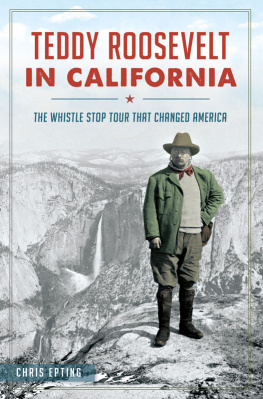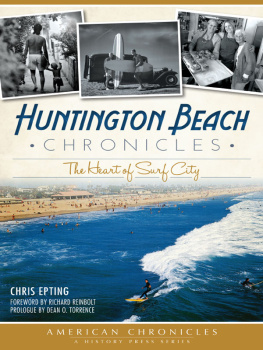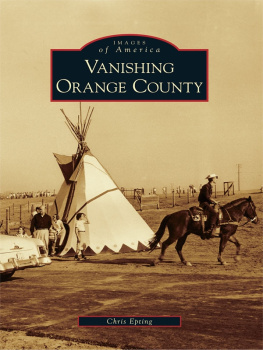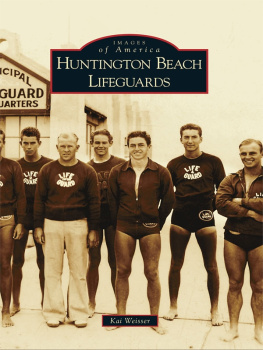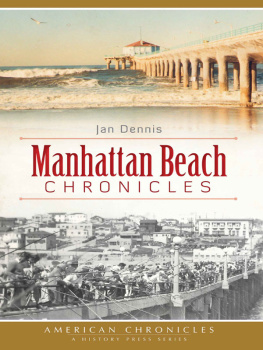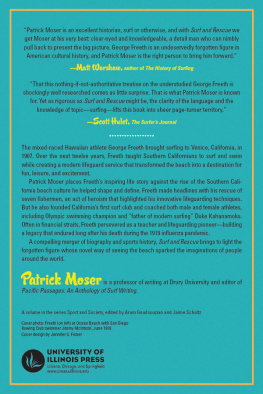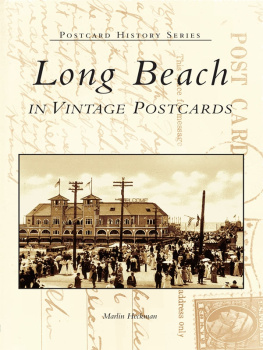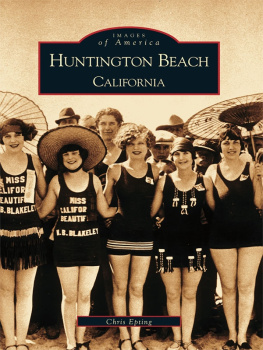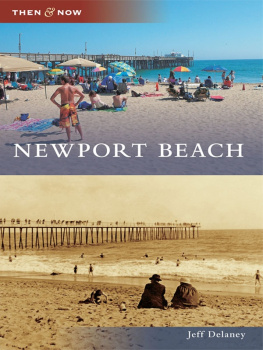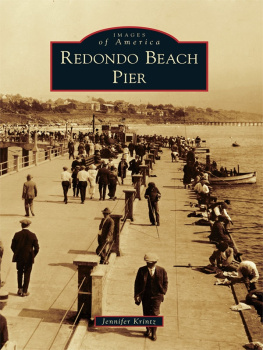
LEGENDARY LOCALS
OF
HUNTINGTON
BEACH
CALIFORNIA

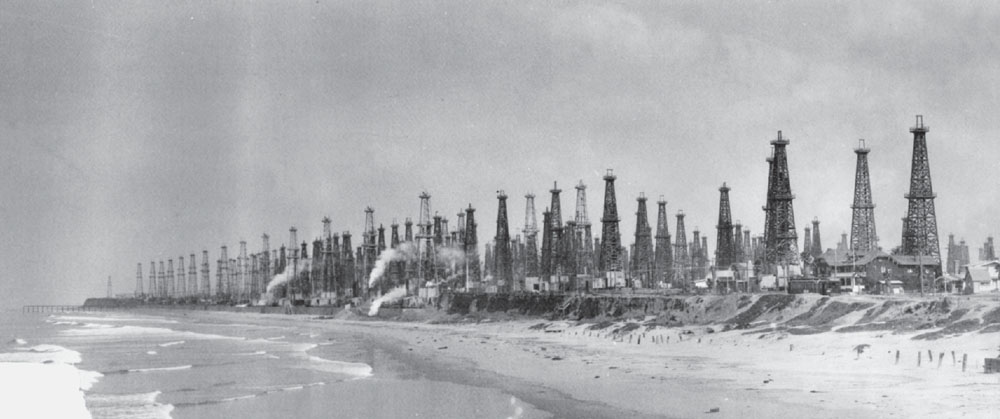
Oil
After oil was discovered in Huntington Beach in 1920, the city became a boomtown almost overnight. Though production has waned over the years, there is still plenty of oil being pumped in Huntington Beach, as well as just offshore. (Authors collection.)
: By the Pier
Downtown Huntington Beach is pictured in the early 1920s. (Courtesy Orange County [OC] Archives.)
LEGENDARY LOCALS
OF
HUNTINGTON
BEACH
CALIFORNIA
CHRIS EPTING

Copyright 2015 by Chris Epting
ISBN 978-1-4671-0186-8
Ebook ISBN 9781439650110
Legendary Locals is an imprint of Arcadia Publishing
Charleston, South Carolina
Library of Congress Control Number: 2014944079
For all general information, please contact Arcadia Publishing:
Telephone 843-853-2070
Fax 843-853-0044
E-mail
For customer service and orders:
Toll-Free 1-888-313-2665
Visit us on the Internet at www.arcadiapublishing.com
Dedication
This book is dedicated to the residents of Huntington Beach, both past and present.
On the Front Cover: Clockwise from top left:
The Salt Water Plunge (courtesy OC Archives), George Freeth (authors collection; see ).
On the Back Cover: From left to right:
Golden Bear (Courtesy OC Archives; see ).
CONTENTS
ACKNOWLEDGMENTS
There are many people over the years who helped teach me about this amazing city. In particular, I would like to thank Duane and David Wentworth, their mom, the late Alicia Wentworth, Chris Jepson, Jerry Person, and, last but not least, Cindy Cross, who provided invaluable support on the surfing chapter.
All images are from the authors collection unless otherwise noted.
INTRODUCTION
The birth of the place that came to be called Huntington Beach occurred more than 100 years ago. On what was originally a 30,000-acre Spanish land grant, the Stearns Rancho Company ran cattle and horses and raised barley. Around 1890, the city was called Shell Beach, becoming Pacific City in 1901, when P.A. Stanton formed a local syndicate and bought 40 acres along the beach. Stantons goal was to create a town on the Pacific Coast to rival Atlantic City on the East Coast. The actual name of the city today goes back to 1904, when Pacific City became Huntington Beach in honor of H.E. Huntington, who brought the Pacific Electric Railway to the area.
On February 17, 1909, the City of Huntington Beach was officially incorporated. From that time, its history begins to truly take shape. It remained a sleepy seaside town until the famous oil boom in the 1920s. Almost every major oil company began production in the rich field below. Wells sprang up overnight; in less than a month, the town grew from 1,500 to 5,000 people. During the years that followed, Huntington Beach was known primarily for oil production and agriculture. Local farms grew lima beans, sugar beets, chili peppers, tomatoes, and similar truck-farming crops in the fertile soil. Expansions began in 1957, when annexations were made from large property holdings and many farmers asked for admittance to the city because of its sound tax base. From 1957 to 1960, Huntington Beach experienced its most rapid growth, increasing to 25 square miles through annexations.
In 1956, construction started on the huge Edison generating plant, and in 1963, the Douglas Aircraft Systems Center opened. This brought major industry to the city, employing nearly 8,000 people. During the 1960s, Huntington Beach became identified as Surf City when the popular Jan and Dean song of that name climbed the charts, bringing the fantasy of the beach lifestyle to the nation. Today, with the city hosting the International Surfing Museum and the US Open of Surfing, as well as many other contests and some of the best year-round recreational surfing, it continues to hold the title of Surf City, USA. But it is more than just the actual surfing that makes the place so special. It is the free-spirited attitude and independence of a place that always has (and seemingly always will) danced to its own drummer.
There are many ways to spend time in Huntington Beach. Museums, parks, shopping, and, yes, the beaches, contribute to an environment that is as ideal as it gets. Factor in some of the best weather in the United States, and it is no wonder that the city continues to grow at unprecedented rates, along with the growing influx of tourists. But, what to do first?
Apart from the popular beaches, it is worth noting that Huntington Beach is also a haven for nature lovers. The newly refurbished Shipley Nature Center is a lush, 18-acre natural area located smack-dab in the middle of scenic Central Park. In the nature center, opened in 1974, local wildlife thrives among native plants and trees. Butterflies, birds, snakes, and turtlesthey are all found here, along with many interactive displays. The center includes 4,000 feet of well-maintained trails that wander through myriad habitats, including oak woodlands, Torrey pines, meadows, and Blackbird Pond, a freshwater wetland with mature willows and sycamores. The centers mission statement reads: The Friends of Shipley Nature Center is a non-profit organization formed to manage the nature center as an ecological sanctuary for California native plants and wildlife and to provide environmental education in an urban setting in partnership with the City of Huntington Beach and the local community, and with the wider world. There are more than 70 parks in Huntington Beach, including the famed Bolsa Chica Ecological Reserve, a 300-acre coastal sanctuary for wildlife and migratory birds. A boardwalk bridge located on Pacific Coast Highway (PCH) crosses over a newly constructed tidal inlet, where a pretty, 1.5-mile loop trail can be found. The walk provides incredible wildlife viewing, and birders from all over the world flock here to take photographs and enjoy the majestic array of feathered friends.
This place is called Surf City, USA for a reason, and at the International Surfing Museum, it all becomes clear. This shrine, located just off Main Street, boasts surfing memorabilia, exhibits featuring surfing films and music, and, of course, relics related to the great Duke Kahanamoku, the famed Olympic swimmer who made surfing popular in the 1920s. But there are other historic sites that also help define the city. The Newland House is a restored 1898 home of Huntington Beach pioneers W.T. and Mary Newland. The picturesque Victorian farmhouse, located at 19822 Beach Boulevard, offers interesting, docent-led tours.
Some of the best surfing, swimming, and fishing in California can be found along the beaches in Surf City, USA. Huntington City Beach flanks Pacific Coast Highway between Beach Boulevard and Seapoint Street. Within this area is the famous Huntington Beach Pier, located where Main Street converges with Pacific Coast Highway. It is perhaps the most famous landmark in Huntington Beach. Here, restaurants, shops, hotels, bars, and more are all within earshot of the ocean, making every day seem like a vacation.
Huntington State Beach extends two miles from Beach Boulevard south to the Santa Ana River on the Newport Beach boundary. Here, as with the other beaches in Huntington Beach, there is a bicycle trail, fire rings for those enchanting bonfires at dusk, concessions, and places to rent bikes, boogie boards and other gear.
Next page

